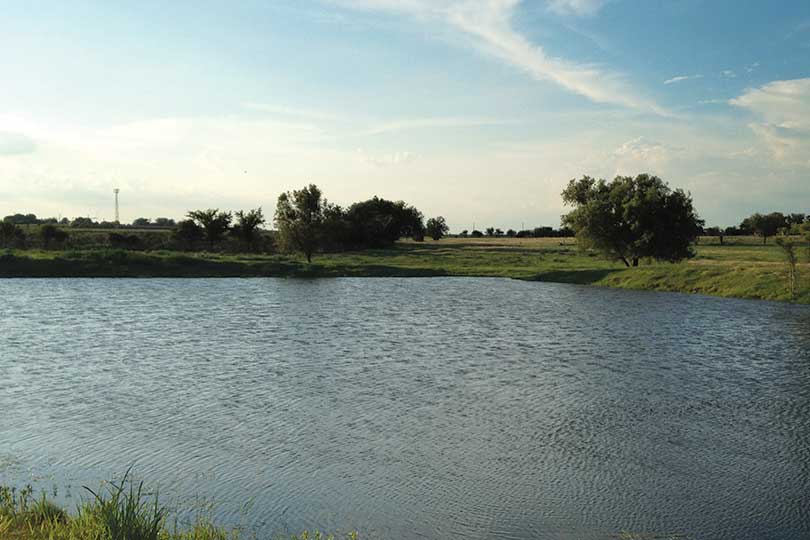By Macie Clugston
TFB Communications Intern
As temperatures increase across the state and as summer nears, it’s important for landowners to maintain healthy ponds and fish populations.
Dr. Todd Sink, Texas A&M AgriLife Extension aquaculture specialist, said proper pond maintenance increases fish productivity and avoids fish kills.
“Summer is coming,” Sink said. “Right now is a good time to be planning or taking action to prevent potential issues for stock ponds. July and August can be deadly if dissolved oxygen levels are not where they should be. We want to help pond owners avoid catastrophe and take steps to set their pond on a good path for long-term production and enjoyment.”
Sink encourages pond owners to set up and maintain a pond’s ecosystem.
“Stock ponds are something that many Texans enjoy recreationally and to put food on their tables,” he said. “But pond maintenance is often overlooked in varying degrees. Some things can reduce pond production and ecosystem health while others can cause major fish die-offs. Right now is a good time to go over science-based recommendations and steps every pond owner can take to create a high-performing stock pond.”
Supplemental aeration is not necessary, but it helps to ensure fish have enough dissolved oxygen, Sink said.
He recommends the bottom-style aerator, because it mixes the entire water column rather than a surface aerator that mixes only the top two to four feet of the pond.
Aquatic vegetation causes 80 percent of low dissolved oxygen fish kills in Texas, Sink said. Only 10-15 percent of the pond’s area should be covered in aquatic vegetation.
Removing vegetation manually can cause more problems. Sink recommends using herbicides or biological controls for aquatic vegetation.
Fertilizing a pond will maximize fish production, Sink said. Six to eight pounds of phosphorous per surface area during the first application benefits most ponds.
Harvesting the correct number of pounds and size of fish also is important, he said.
Sink said pond owners should harvest 25 pounds or more of 8-10-inch bass and 10-15 pounds of 12-16-inch bass per acre from fertilized ponds. Every catfish above two pounds should be harvested in unfertilized ponds.
“You have to harvest a lot more fish to maintain a good balance,” he said. “Not harvesting enough predatory fish is the most common problem. Eventually, they overpopulate and eat all the sunfish, and there’s not enough food in the pond. That causes stunting.”
It is a good time for pond owners to check their pond water’s pH levels, Sink said.
If the pH is below 6 or alkalinity below 50 parts per million, give the pond crushed agricultural limestone.
Much effort goes into maintaining a healthy pond, but Sink noted these steps help boost the pond’s performance and prevents catastrophes.
“It may seem daunting at first, but once a pond environment and ecosystem is balanced, pond maintenance becomes routine,” he said. “If fishing or just having a healthy pond is important, it’s worth the effort.”
Click here for more information on pond management from AgriLife Extension.

